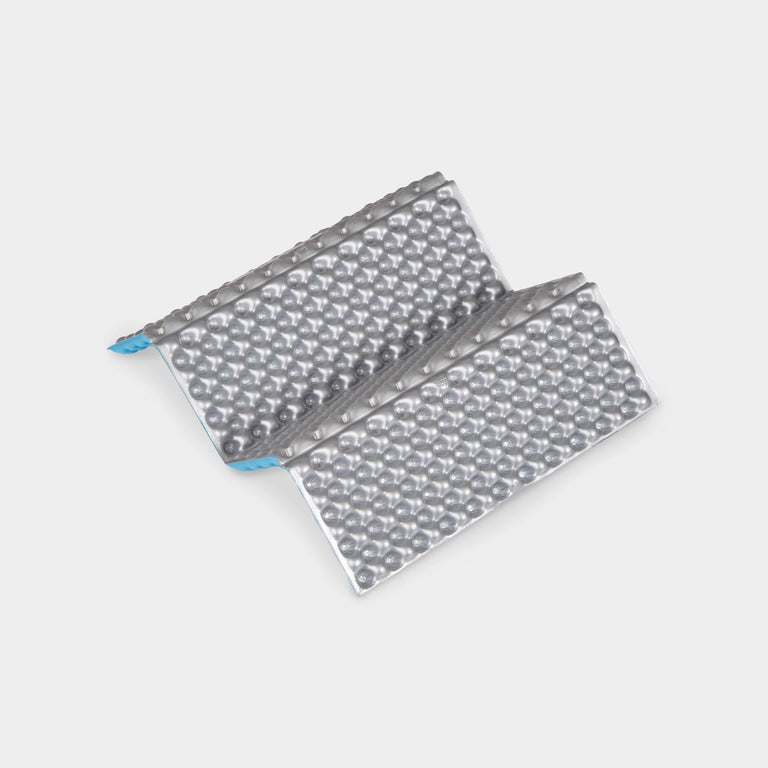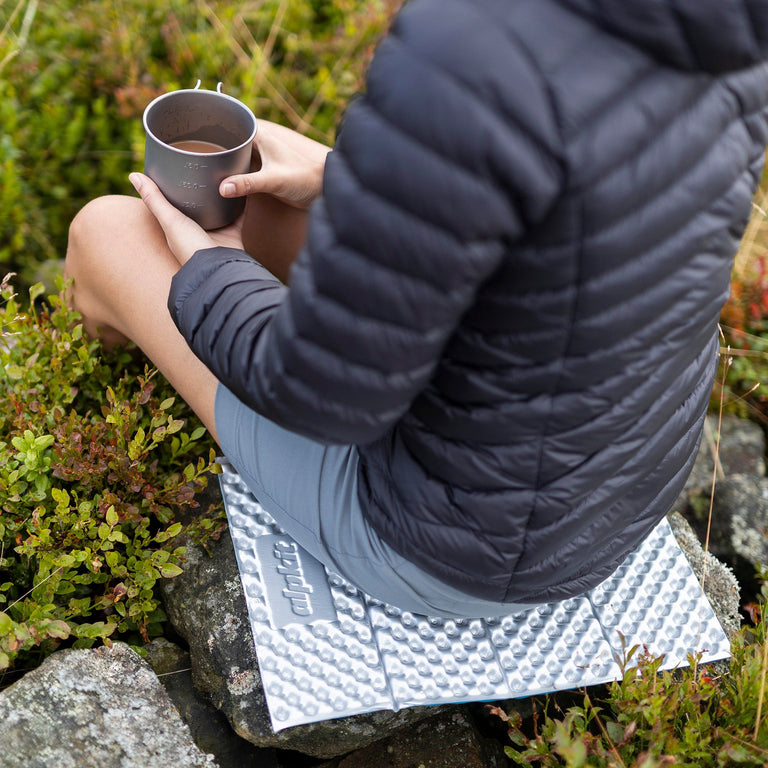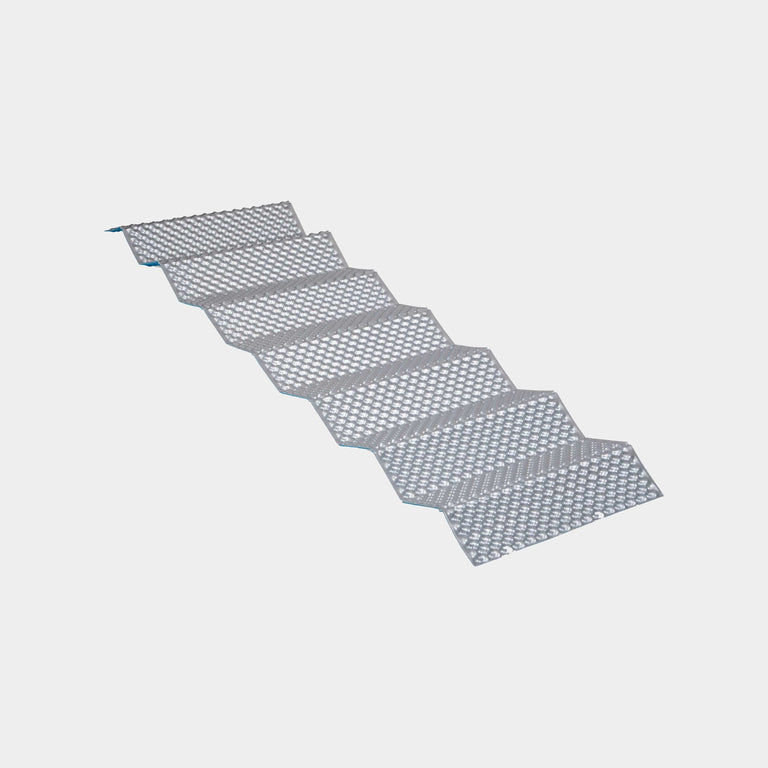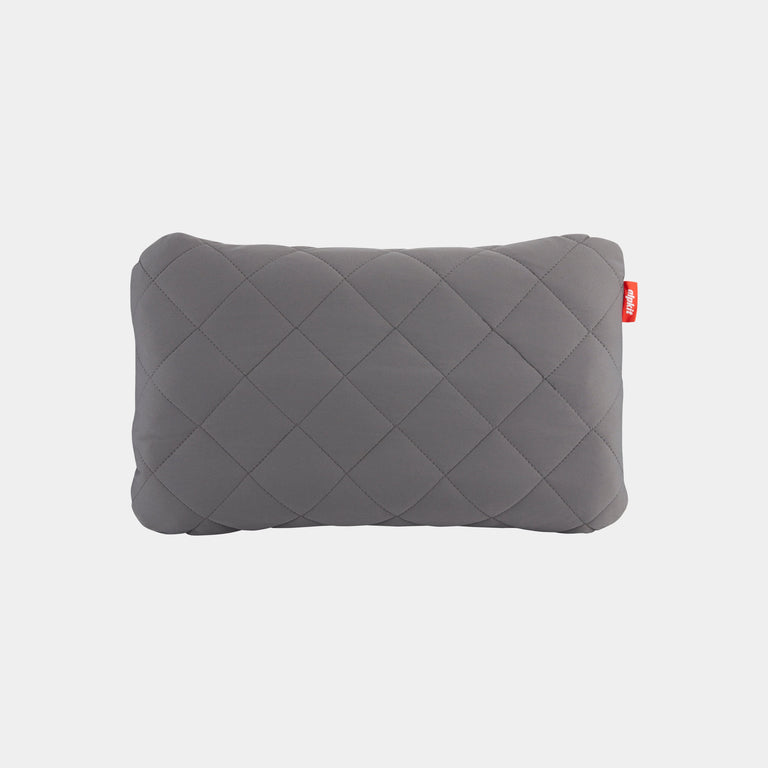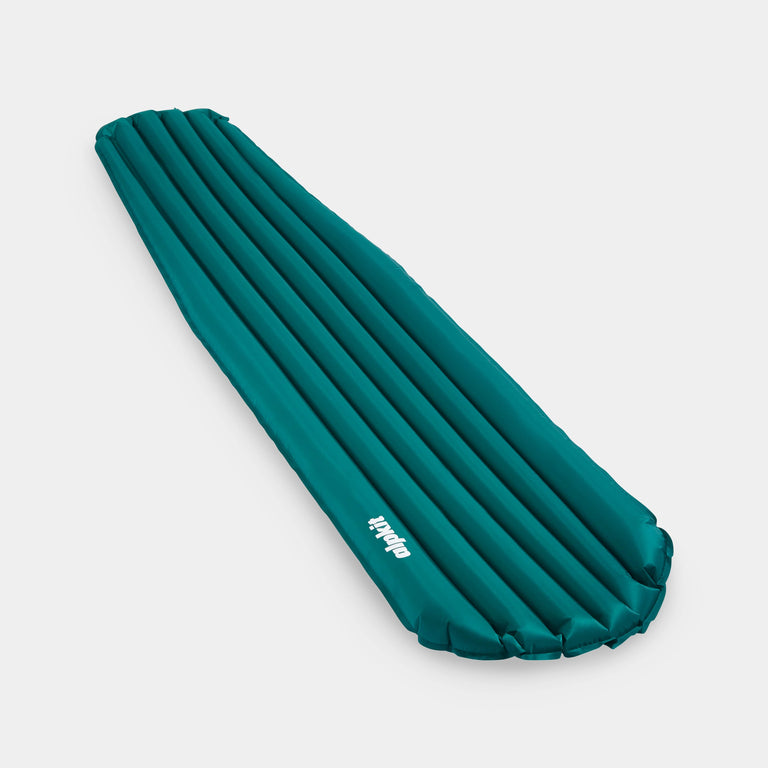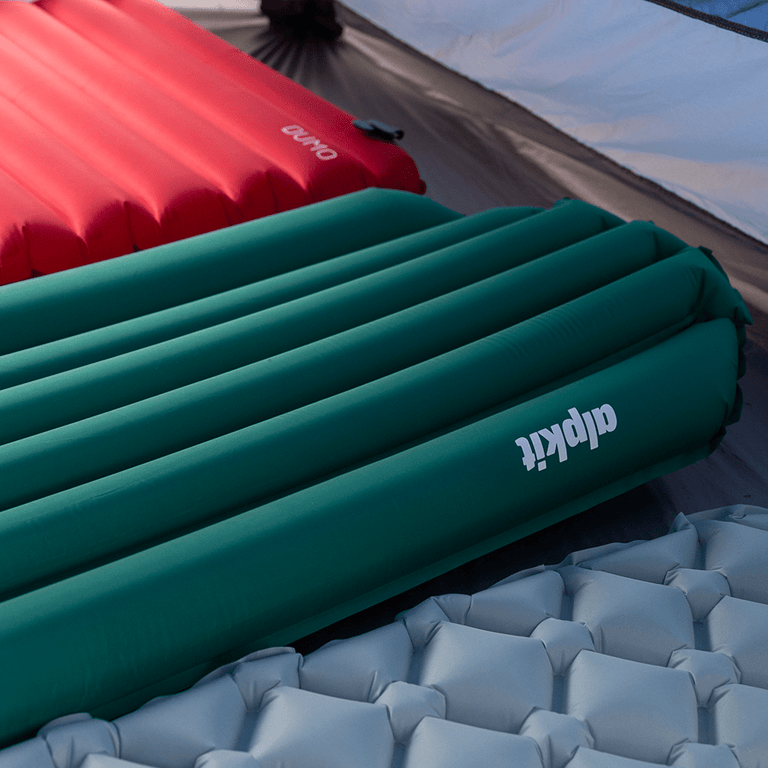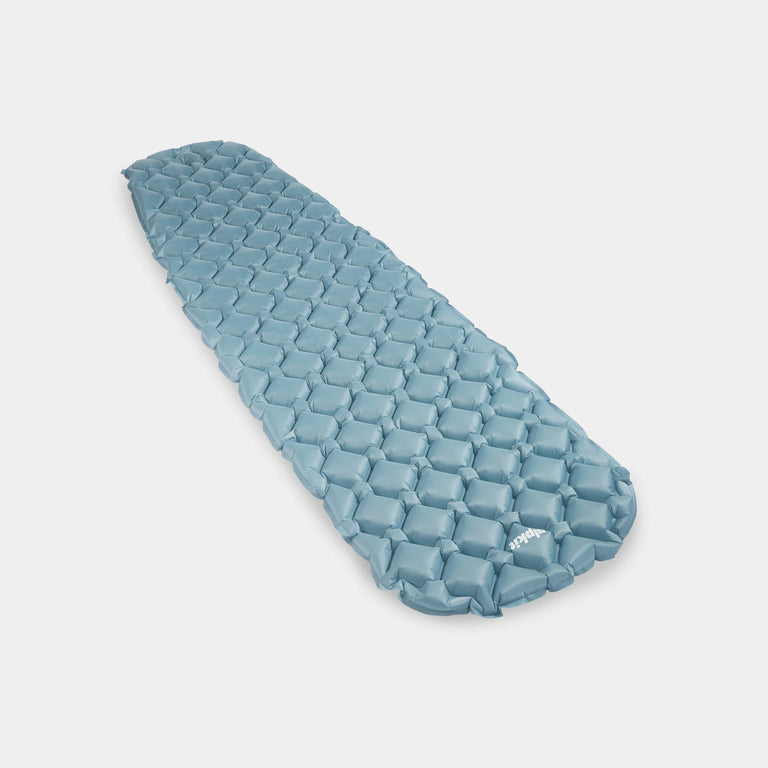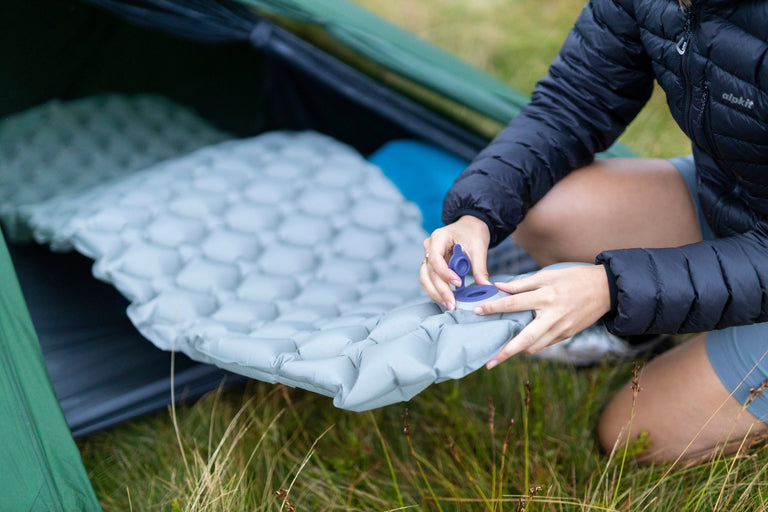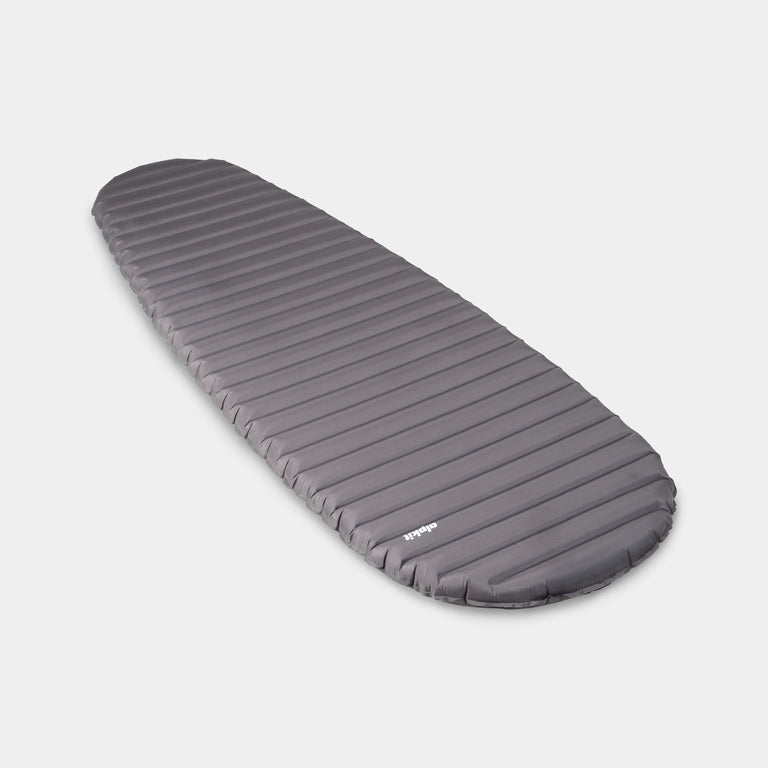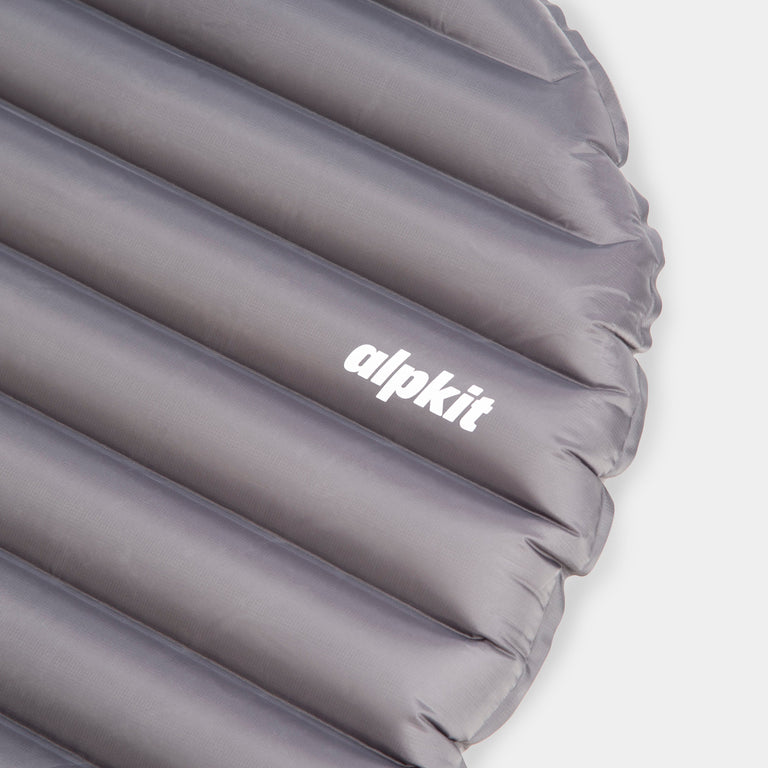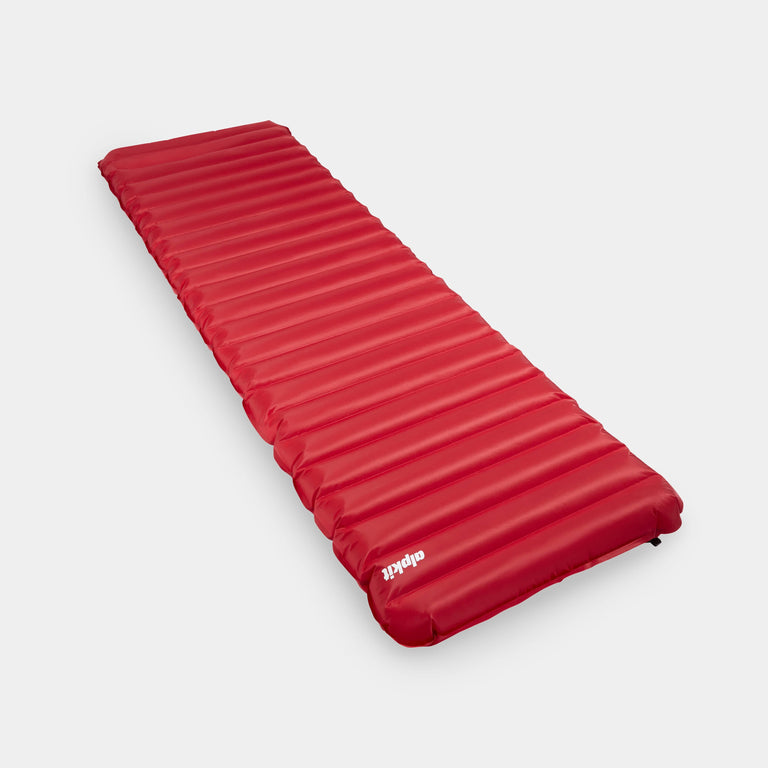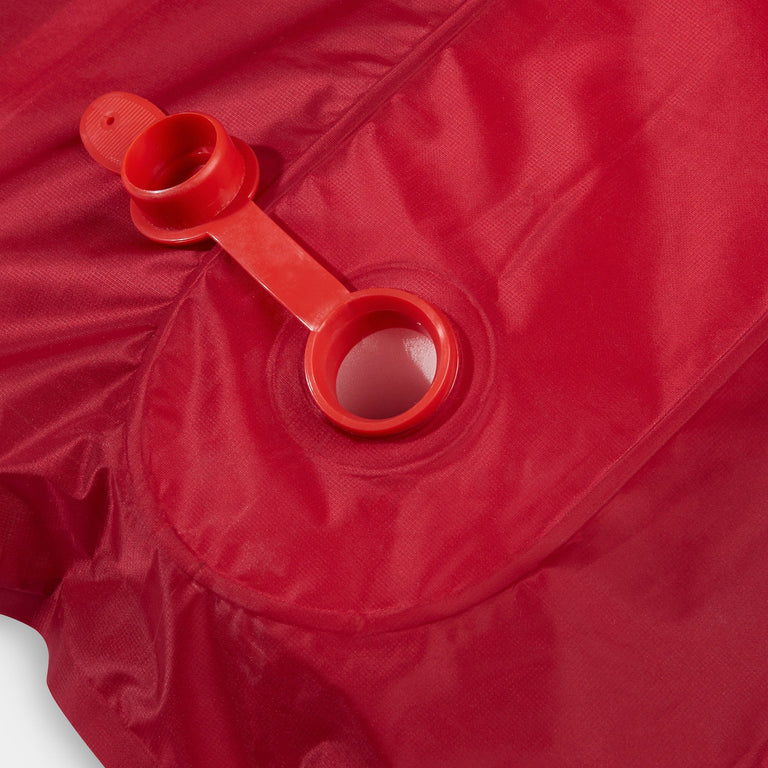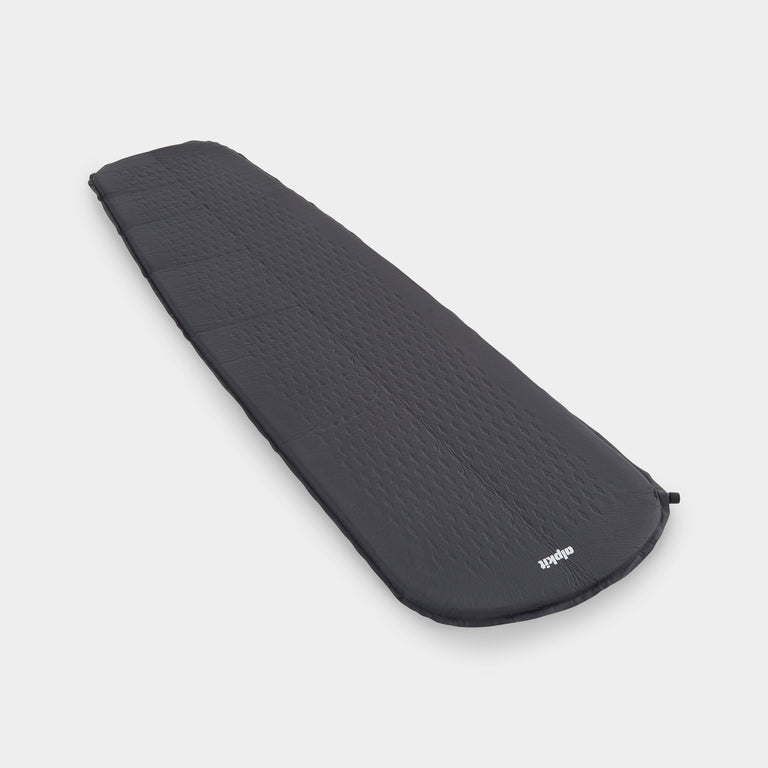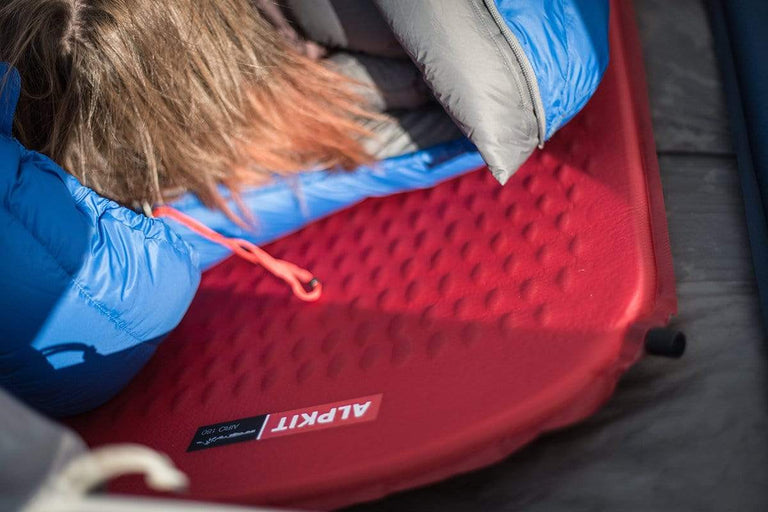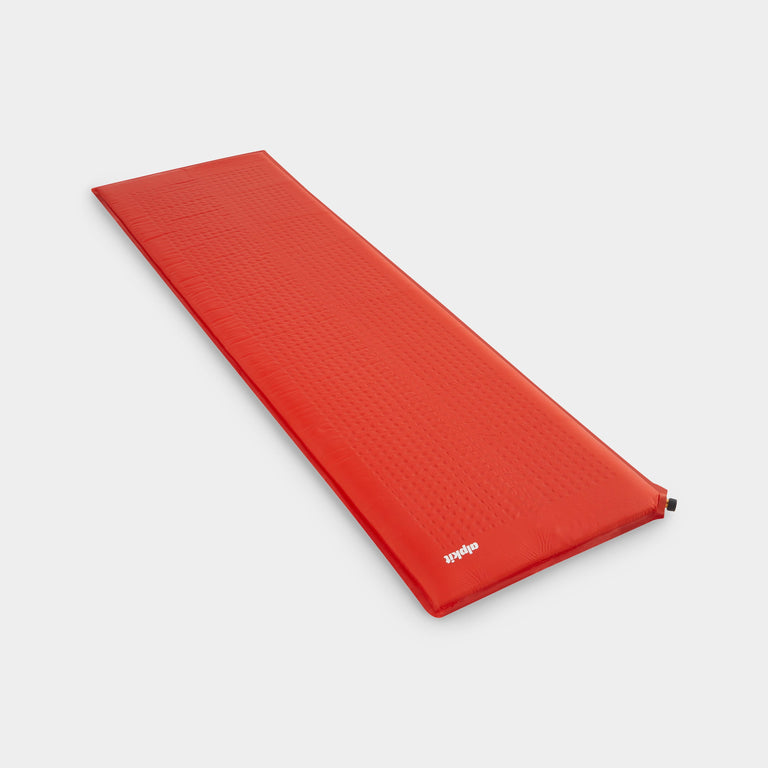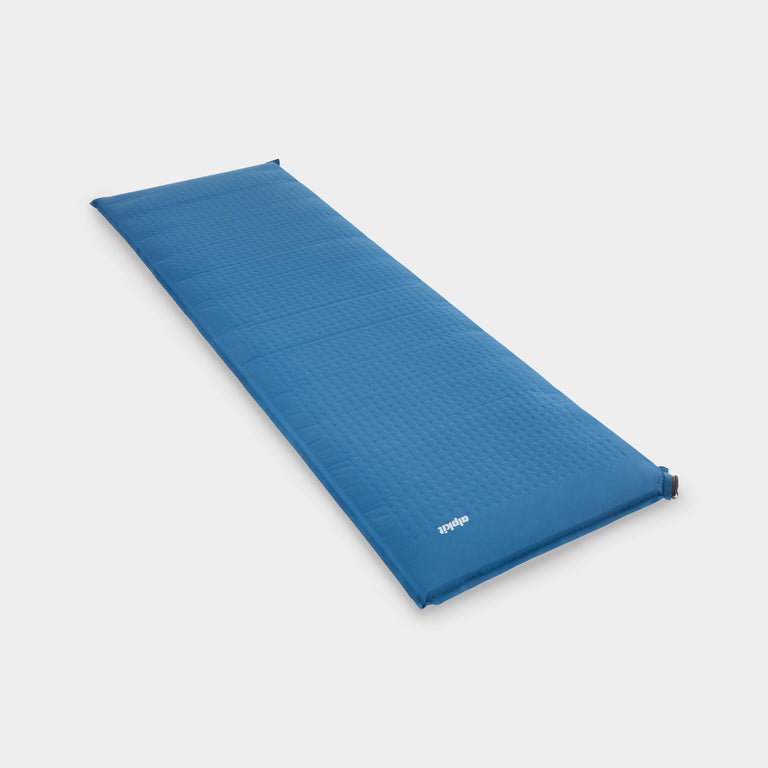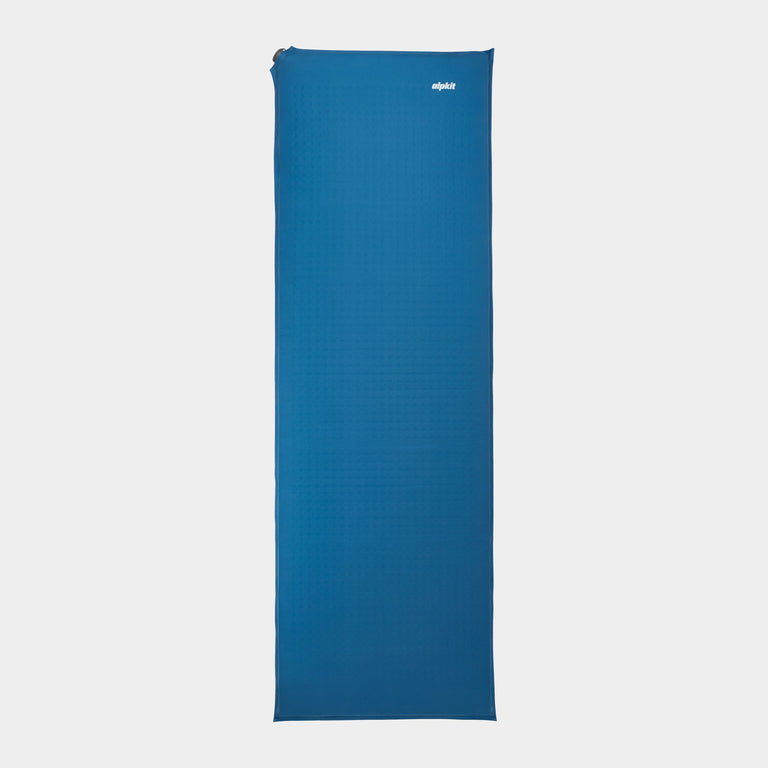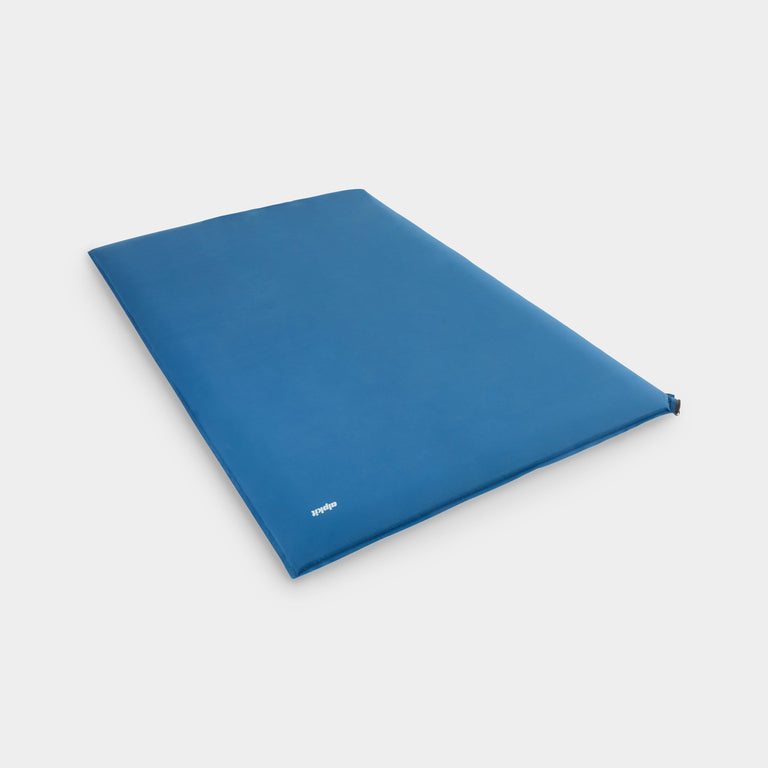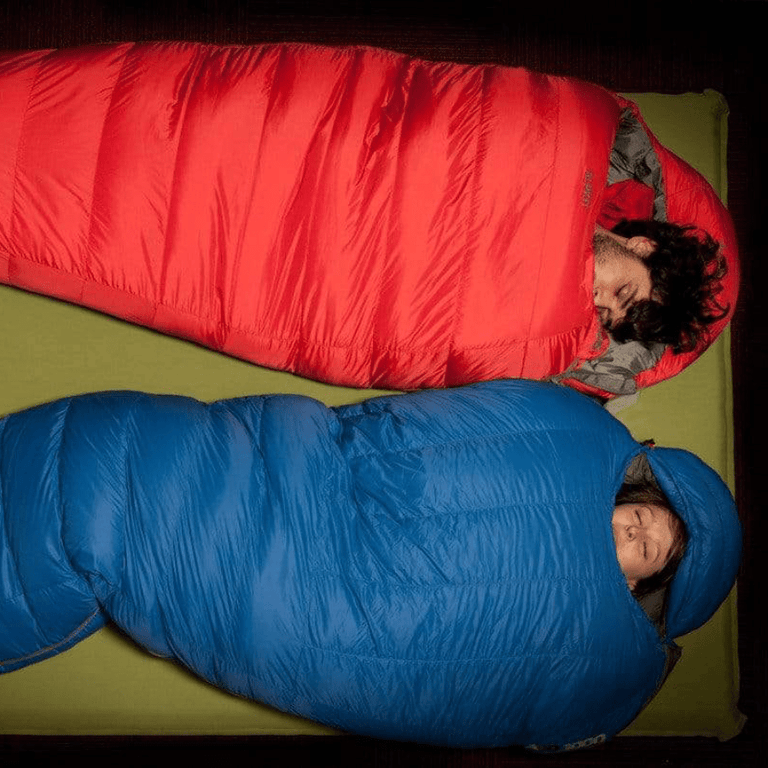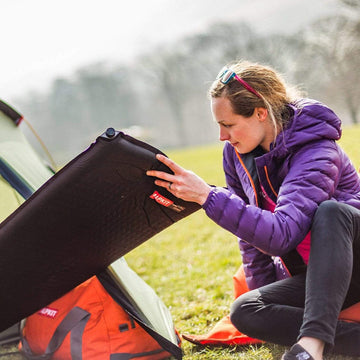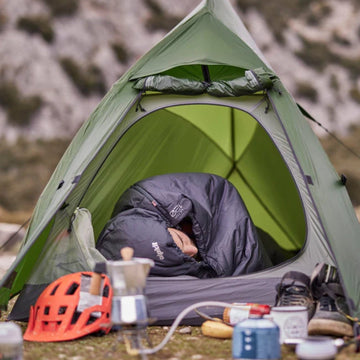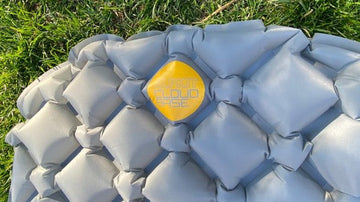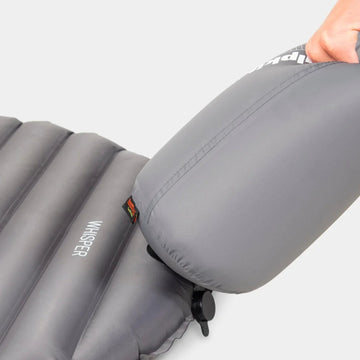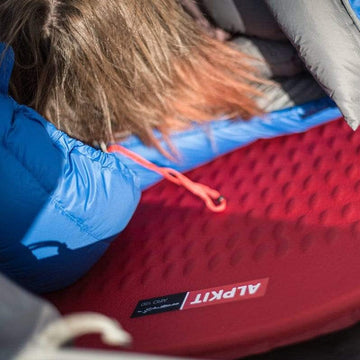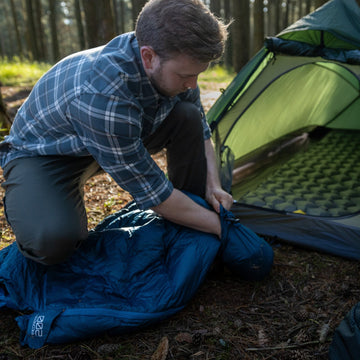
R values are a measure of how much insulation your camping or sleeping mat provides. With an international test standard, how useful are they in practice?
The higher the R-value the warmer your sleeping mat will be. R-values are a great indicator to help you find and purchase a suitable sleeping mat for your adventure.
Based on an international standard test known as ASTM F3340-22 R-values let you compare the thermal resistance of different sleeping mats. Here's everything you need to know about R values and what they can tell you.
Sleeping mat R values explained
- What are sleeping R values?
- Why we use R values?
- Explaining Radiant Heat Technology
- What is the international standard
- How do you use R values to choose a sleeping mat?

What is an R Value in sleeping mats?
R Values are a measurement of thermal resistance – they measure heat flow through a given thickess of material - so they tell you how well your sleeping mat resists heat loss.
The higher the R value, the more your mat resists heat loss and the better it insulates you from the cold ground. As a rule of thumb, an R value of 1.0 to 2.0 is fine for summer use but you’d need a rating of 4.0 to 5.0+ for winter camping.
Why do Alpkit use R values?
There's an international standard for R-values. It's a framework to help you make the right decision for the adventure you have in mind. So you can stay warm, sleep soundly and wake up full of beans for your next day out.

Radiant Heat Technology boosts the R-Value
R-values can be dramatically increased by using Radiant Heat Technology. This enhances the warmth and comfort of sleeping outdoors, especially in colder environments. This technology involves embedding reflective materials or heat-reflective coatings within the sleeping mat. Our Radiant sleeping mat uses Radiant Heat Technology to achieve a ASTM R-value of 7.2. Here’s how it typically works:
Reflective Layers: A layer of reflective material (like a thin aluminum coating) is bonded to the inner face of the sleeping mat. It reflects body heat back towards the sleeper. This helps in retaining warmth and improving insulation.
Material and Construction: Using fit for purpose materials and construction techniques we can create air pockets or chambers that restricts air movement in the mat.
When combined these features are particularly useful in minimising heat loss to the ground, which is a major issue in cold weather camping. By increasing the efficiency of the mat’s insulation, they allow for a lighter and more compact design while still providing significant warmth.
Double up to increase the R-Value
R-value is additive. If you place one sleeping mat on top of another you can add together their individual r-values to give the new combined r-value.
What is the international standard
Having an internationally agreed standard known as ASTM F3340-22 makes it easier to compare between mats from different companies, much in the same way we now can with EN 13537 Comfort, Limit and Extreme ratings for sleeping bags.
Without a consistent standard, brands will always choose the testing method that produces the highest R value for their mats. These test results can be mis-leading and can make it hard to choose between different manufacturers.
Can you convert R values into Celsius or Fahrenheit?
The values do not convert directly, but we can interpolate to a figure that give a rough indication at which night time temperatures the mat should be suitable.
- R1: 10° C / 50 F
- R2: -1° C / 30 F (Whisper)
- R3: -4° C / 25 F (Dirtbag)
- R4: -12° C / 10 F
- R5: -18° C / 0 F
- R6: -26° C -15 F
- R7: -32° C / -25 F (Radiant)
- R8: -40° C / -40 F

How do you choose a Sleeping Mat?
Some types of sleeping mat construction are much more insulating than others. For instance, uninsulated inflatable mats will always be colder than self-inflating mats which are packed with insulating open-cell foam.
Our sleeping mat range covers every eventuality from ultralight inflatable mats for summer backpacking and bikepacking, to luxuriously thick car camping mattresses. We’ve made sure each mat has a particular purpose, influenced by decades of experience using sleeping mats all over the world.

There are lots of different factors that can affect whether you get a warm night’s sleep. Remember that your sleeping mat is only one part of your sleep system, along with your sleeping bag and clothing. That said, choosing a warmer mat means that your entire sleep system will be more effective when it’s time to hit the hay.

